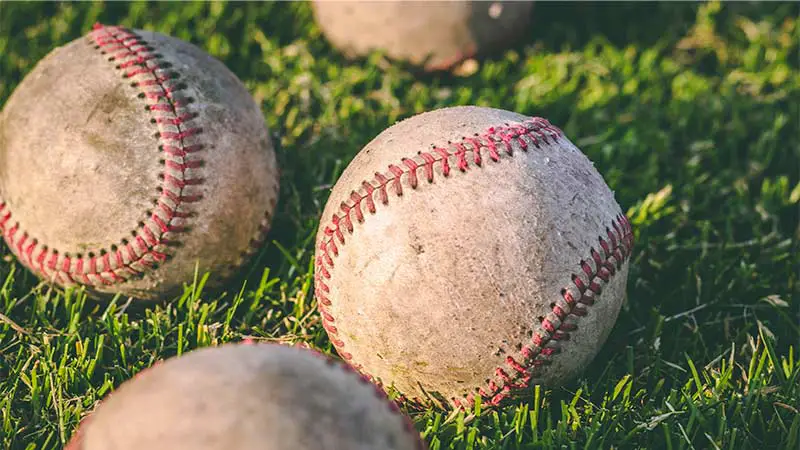In the world of baseball, the concept of a “dead ball” can be a bit perplexing, especially since the game doesn’t operate on a clock like many other sports.
Unlike the rapid transitions you see in basketball or football, baseball’s pace allows for unique moments when the ball is declared dead, halting all play. This momentary pause can significantly impact the dynamics of the game.
When the ball is dead, players and coaches have a chance to regroup, but the ball doesn’t automatically become dead just because the action stops. For instance, even after recording a third out, the ball remains live unless the umpire explicitly calls time.
Understanding these nuances can give you a deeper appreciation of the strategic elements at play. Whether you’re a seasoned fan or new to the sport, grasping the rules around a dead ball can enhance your viewing experience and knowledge of the game.
The Dead Ball Era in Baseball
The Dead Ball Era in baseball, from roughly 1900 to 1920, was marked by low scores, fewer home runs, and a style of play that heavily favored pitchers. This period profoundly influenced the game with its distinct characteristics.
Key Characteristics of the Era
The Dead Ball Era spanned from about 1900 to 1920. During this period, games had low scores and fewer home runs. In 1908, the major league batting average dropped to .239. Teams averaged just 3.4 runs per game.
Spacious ballparks and a “dead” ball—due to overuse and design—restricted power hitting. Pitchers also scuffed and adulterated the ball, further disadvantaging hitters. Rules at the time allowed for tricky pitches like the spitball, making it even more challenging for batters.
Impact on Game Strategy and Play
Offensive strategies focused more on “small ball” tactics. Instead of relying on home runs, teams used bunts, stolen bases, and hit-and-run plays.
Defensively, teams emphasized pitching and fielding. Errors were more frequent, with six per game on average.
Pitching conditions led to a higher rate of walks compared to errors. These elements combined to create a unique and strategic style of play, prioritizing precision and speed over power hitting.
Understanding these strategies can give you deeper insights into the complexities of the game during this iconic era.
Factors Influencing the Dead Ball Era
The Dead Ball Era in baseball was shaped by various factors that influenced gameplay, strategies, and the overall dynamics of the sport during that time. Here’s a breakdown of the key factors:
The Ball’s Manufacturing and Materials
Manufacturing and material choices significantly influenced the Dead Ball Era’s character. Early baseballs contained a rubber core and were wound tightly with yarn, making them less lively when hit. This design caused the ball to travel shorter distances.
Additionally, pitchers often scuffed, marked, or even spat on the ball, making it unpredictable and harder to hit. The “spitball” remained legal until 1921, adding to the pitcher’s arsenal of deceptive techniques and contributing to the era’s low-scoring games.
Rules and Regulations Affecting Gameplay
Rules and regulations played a critical role during the Dead Ball Era. Pitchers had more freedom to manipulate the ball with various substances, which increased its unpredictability. Fielding gloves were primitive and provided minimal assistance, leading to frequent errors.
A notable rule change occurred in 1920, where hits over the fence in fair territory but landing foul were considered home runs. Despite this, home runs remained rare, as hitters primarily focused on contact-oriented strategies to put the ball in play consistently.
Changes in Ballpark Designs
Ballpark designs during the Dead Ball Era also influenced game dynamics. Many ballparks had expansive outfields, making home runs difficult to achieve.
For example, the West Side Grounds of the Chicago Cubs extended 560 feet to the centerfield fence, and the Huntington Avenue Grounds of the Boston Red Sox stretched to 635 feet.
Such dimensions discouraged power hitting and encouraged hitters to aim for singles and doubles instead. While the exact dimensions varied and are often debated, the general trend of larger parks hindered offensive output and reinforced the small-ball approach.
Notable Players and Teams of the Era
The Dead Ball Era in baseball featured several notable players and teams whose performances left a lasting impact on the sport. Here’s a glimpse into some of the standout figures and teams from that era:
Pitching Legends
Pitchers played a crucial role during the Dead Ball Era. With a focus on finesse over power, notable pitchers excelled. Cy Young, with 511 career wins, remains one of the most celebrated pitchers. His pinpoint control and masterful pitch selection made him a dominant force.
Christy Mathewson, another standout, accumulated 373 wins. Nicknamed “Big Six,” Mathewson was known for his exceptional command and strategic approach.
Walter Johnson, famed for his velocity, amassed 417 wins. Johnson’s fastball overwhelmed hitters and secured his place as one of the era’s finest pitchers.
Influential Batters
Batters during the Dead Ball Era focused on contact and speed due to the lack of power hitting. Ty Cobb, with a .366 career batting average, exemplified this with aggressive base-running and frequent bunts.
Honus Wagner, with a .328 lifetime average, was a consistent hitter and base-stealer for the Pittsburgh Pirates. Nap Lajoie, with a .338 career average, also stood out for his power and solid contact.
Players of this era adapted to spacious ballparks and less lively baseballs, significantly influencing the game and making the Dead Ball Era memorable.
The End of the Dead Ball Era
The conclusion of the Dead Ball Era in baseball marked a significant transition in the sport’s history, characterized by notable changes in both technological advancements and rule modifications.
Here’s an overview of the factors that led to the end of the Dead Ball Era:
Technological Advancements in Ball Design
During the 1920s, changes in baseball manufacturing significantly contributed to the end of the Dead Ball Era. The introduction of tighter wound balls increased their resilience. As a result, balls traveled further when hit.
These technological advancements improved the overall liveliness of the ball, leading to higher scoring games. The use of high-quality materials reduced wear and tear, maintaining consistent performance throughout games.
This shift marked a departure from the previous era’s softer, less dynamic balls.
Major Rule Changes
Two pivotal rule changes hastened the end of the Dead Ball Era: banning the spitball in 1920, which limited pitchers’ ability to control ball movement, and the introduction of the foul strike rule, making foul balls count as strikes unless the batter had two strikes.
These changes reduced pitchers’ dominance, sped up the game, and promoted more aggressive batting.
Combined with technological and training advancements, these modifications led to a more dynamic era in baseball characterized by more home runs and higher scores, ending the Dead Ball Era.
Frequently Asked Questions
What does Dead Ball Era mean in baseball?
The term “Dead Ball Era” refers to the period in American baseball, from the early 1900s to the early 1920s, characterized by low scores, fewer home runs, and pitcher-friendly conditions due to the design of ballparks and the baseballs used.
How did ballpark design impact the Dead Ball Era?
During the Dead Ball Era, ballparks were often large with deep outfields, making it difficult for batters to hit home runs. This, combined with softer baseballs, led to fewer high-scoring games.
What role did the “spitball” pitch play in the Dead Ball Era?
The “spitball” was a legally allowed pitch where pitchers altered the ball with saliva or other substances, resulting in unpredictable movement, making it harder for batters to hit, contributing to lower scores.
How did the Dead Ball Era come to an end?
The Dead Ball Era ended in the 1920s due to advancements in ball design, such as tightly wound balls, and significant rule changes like banning the spitball and introducing the foul strike rule, leading to higher scores and more home runs.
What major rule changes occurred after the Dead Ball Era?
Key rule changes included prohibiting the spitball and implementing the foul strike rule, which made batting more challenging and increased offensive output, shifting the game towards higher scores and more exciting plays.
Conclusion
Understanding the Dead Ball Era and its eventual transition offers valuable insights into how baseball evolved into the sport you enjoy today.
The shift from low-scoring games to a more dynamic and high-scoring style of play highlights the impact of rule changes and technological advancements.
By appreciating this pivotal period, you gain a deeper appreciation for the strategic complexities and historical developments that have shaped modern baseball.
As you watch today’s games, remember the significant transformations that have made baseball the thrilling and unpredictable sport it is now.
From the introduction of livelier baseballs to the emergence of power hitters, each change has contributed to the fast-paced action we witness on the field. So next time you cheer for a home run, think of the Dead Ball Era and how far the game has come.








Pat Bloom